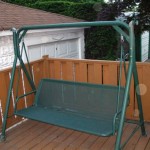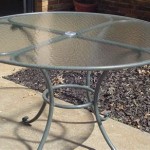Patio Garden Planter: Essential Aspects to Consider for a Thriving Green Haven
Patio garden planters have emerged as a popular solution for cultivating lush and bountiful gardens in limited urban spaces. Whether you're a seasoned gardener or an aspiring green thumb, understanding the essential aspects of patio garden planters is crucial for ensuring a successful and rewarding experience.
Size and Material
The size and material of your patio planter will determine its capacity and durability. Larger planters allow for bigger root systems and more plants, but they can also be heavier and more expensive. Smaller planters are more versatile and easier to move around, but they may limit your choice of plants.
Patio planters are typically made from materials such as terracotta, plastic, or metal. Terracotta provides good drainage but can be fragile. Plastic planters are lightweight and durable, while metal planters are sturdy and stylish.
Drainage
Drainage is essential for preventing waterlogging, which can lead to root rot and other plant health issues. Patio planters should have adequate drainage holes to allow excess water to escape. If your planter does not have drainage holes, you can drill them yourself or place a layer of gravel or pebbles at the bottom for drainage.
Soil and Fertilization
The type of soil and fertilization schedule you use will directly affect plant growth and health. Choose a soil mix that is well-draining and rich in organic matter, such as compost or peat moss. Fertilize your plants regularly according to the manufacturer's instructions to provide essential nutrients for healthy growth and blooming.
Plant Selection
When selecting plants for your patio garden planter, consider the amount of sunlight it receives and the size of your planter. Some popular choices for patio garden planters include herbs, vegetables, flowers, and succulents. Choose plants that complement each other in terms of size, color, and growing habits to create a vibrant and cohesive garden.
Maintenance
Regular maintenance is essential for keeping your patio garden planter thriving. Water your plants deeply and consistently, especially during hot and dry weather. Remove any dead or fading leaves and flowers to encourage new growth. Fertilize your plants according to the manufacturer's instructions. Repot your plants as they grow and need more space.
By considering these essential aspects, you can create a thriving and beautiful patio garden planter that adds color, fragrance, and a touch of nature to your outdoor space.

Keter Easy Grow Garden Patio Planter With Legs 120l Free Delivery The Home Pe

Garden Planter Herb Flower Planters Patio Singapore

How To Create A Patio Vegetable Garden With Planters Pots

Extra Large Tall Deep Wooden Garden Trough Patio Planter Singapore

Grow A Balcony Garden Full Of Veggies Herbs And Flowers
:max_bytes(150000):strip_icc()/lazyguydiy-9fe727073fef43bca79764e5c6ea8f44.jpg?strip=all)
11 Free Diy Raised Planter Box Plans

Large Oak Whiskey Half Barrel Planter Patio Herb Veg Next Day Singapore

Outdoor Planter Arrangement Ideas 18 Ways To Impress With Your Garden Pots Creative Design Manufacturing

Starting A Kitchen Garden How To Grow Food On Your Patio Cottage Bunker Hill

Tised Wooden Garden Planter S Patio Window Box Flower Bedding Herbs








